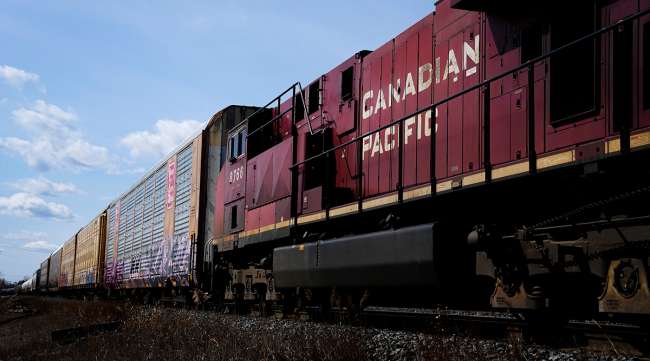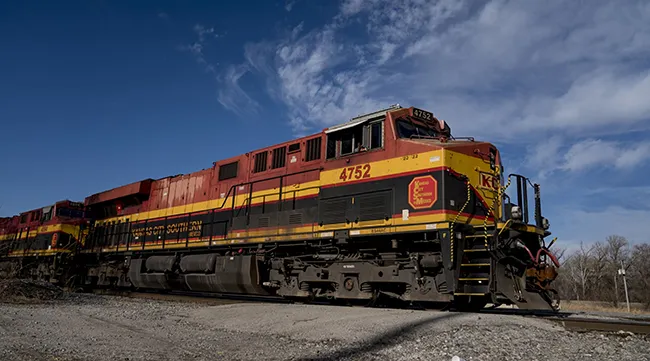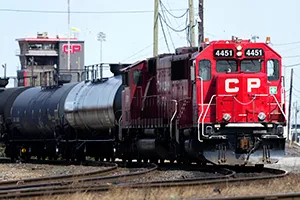Senior Reporter
Kansas City Southern’s Sale to Canadian Pacific Approved

[Stay on top of transportation news: Get TTNews in your inbox.]
By a 4-1 vote, the U.S. Surface Transportation Board on March 15 approved the more than $31 billion merger of Canadian Pacific Railway and the smaller but strategically significant Kansas City Southern Railroad.
The deal is the nation’s first major rail merger in 25 years. The 212-page decision paves the way to creating the first single-line railroad linking Canada, the United States and Mexico.
“This transaction should improve rather than degrade the performance of the industry,” the board said, citing substantial support from shippers.
Mexican and Canadian government regulators had signed off on the deal earlier.
STB said its vote authorizes Canadian Pacific to take control of Kansas City Southern as early as April 14. Canadian Pacific said it is reviewing the decision and will announce the next steps in the coming days.
Canadian Pacific and Kansas City Southern combination approved by U.S. Surface Transportation Board. https://t.co/VXSovOlRT5 pic.twitter.com/OGGt0MSQiL — Canadian Pacific (@CanadianPacific) March 15, 2023
However, CP officials were elated that the merger has cleared a key regulatory hurdle.
“This decision clearly recognizes the many benefits of this historic combination,” Canadian Pacific President and CEO Keith Creel said in a statement. “These benefits are unparalleled for our employees, rail customers, communities and the North American economy at a time when the supply chains of these three great nations have never needed it more.”

Creel
The new railroad will be known as Canadian Pacific Kansas City, and it brings an end to a two-year-long process that started with Kansas City Southern being pursued by two Canadian railroads at the same time in a multibillion-dollar bidding battle that became bitter between CP and Canadian National.
In the early months of the process, when it became known that KCS was available, Canadian National actually outbid CP by several billion dollars. Still, CN’s offer was rejected by the board because of concerns about competition and how its tracks overlapped with Kansas City Southern.
Still, the CP-Kansas City Southern merger also raised anti-competitive concerns within the U.S. Justice Department and the Federal Maritime Commission.

STB's vote authorizes Canadian Pacific to take control of Kansas City Southern as early as April 14. (Whitney Curtis/Bloomberg News)
STB said in its decision that the merger will help grow freight movement on railroads and move an estimated 64,000 truckloads of freight off North American roads.

Canadian Pacific trains sit idle on the tracks due to a strike at the main CP Rail train yard in Toronto in March 2022. (Nathan Denette/The Canadian Press via AP)
“We are cognizant of the economic impact of having this single-line service from Canada to Mexico through the United States, and we made some observations about that in our decision,” Chairman Martin Oberman said at a news conference. “The single-line service will be a great benefit to the U.S. economy and commerce. This will be a plus, moving a tremendous amount of grain that goes from the U.S. to Mexico. It will go there faster and cheaper. Moving automobile parts back and forth between the U.S. and automobile factories in Detroit and Canada will facilitate commerce. We were very aware of the economic benefits to this country by having this railroad come into existence.”
STB is imposing strict conditions to the merger, including what Oberman said is an “unprecedented seven-year oversight period,” when the new railroad will be monitored and, in addition to data-reporting requirements, CPKC will have to justify rate increase requests.
During that time, STB says it will collect data on train lengths to monitor community concerns about blocked crossings. As the length of trains has grown, in some cases to more than 1.5 miles, some communities have voiced concern about the projected increase of longer trains due to the merger.
During the review process, leaders of the two railroads pointed out that their respective tracks do not overlap but do connect in Kansas City, Mo. A merger would create the first direct route from the Canadian oil sand mines in Alberta to refineries in Texas that process heavy crude.
Canadian Pacific said it will take up to three years for the railroads to fully integrate their systems. During that time, they plan to upgrade their rail lines to support the projected increases in traffic in grain, car and truck parts, lumber, oil and other products.
Kansas City Southern railroad merger approved despite growing concerns over rail safetyhttps://t.co/41nCymsRBZ pic.twitter.com/3ZOabbJK46 — Kris Ketz (@KrisKetzKMBC) March 15, 2023
Even with the merger, STB noted that CP and KCS are smaller than the other Class I freight railroads, ranking sixth and seventh in size. The new carrier would remain the nation’s smallest Class I railroad. This marks the first major rail merger since 1998, when CSX and Norfolk Southern each took a share of Conrail.
Regarding commuter rail operations, where the two freight carriers lease those tracks for passenger traffic, STB said Amtrak might benefit because Canadian Pacific has agreed to allow Amtrak to add service in some corridors and pledged the merger will not hurt Amtrak operations.
In Chicago, the region’s Metra commuter service was opposed, but STB said in its investigation it is unlikely the merger will harm that area’s extensive commuter rail system.
Want more news? Listen to today's daily briefing below or go here for more info:



